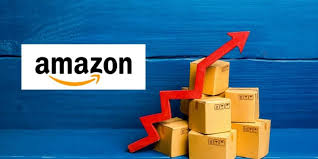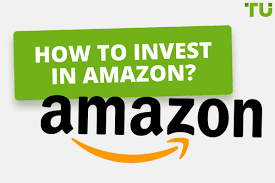
FBA ON AMAZON:
FBA stands for Fulfillment by Amazon, a service offered by Amazon that allows sellers to store their products in Amazon’s fulfillment centers. Amazon handles storage, packaging, shipping and customer service for these products.
- How FBA does works on Amazon?
- What is FBA Wholesale
- Types of amazon fba fees
- what is fba Calculator
- What is the pros and cons of FBA
How FBA does works on Amazon?
Sellers ship their products to Amazon’s warehouses: Sellers ship their inventory to Amazon’s fulfillment centers. Once the items are received and stored, they are ready to ship to customers.

Amazon handles logistics:
When an order is placed for one of the seller’s products, Amazon takes care of picking, packing, shipping and tracking the order to the customer.
Customer Service and Returns:
Amazon also handles customer service and product returns, making it easier for sellers to focus on other aspects of their business.
Prime Eligibility:
Products fulfilled through FBA are often eligible for Amazon Prime, which offers customers faster shipping options, which can increase sales.
The FBA program benefits sellers by streamlining operations, providing access to Amazon’s extensive logistics network, and potentially improving sales through faster shipping and better customer service. However, sellers pay fees for storage and fulfillment services that Amazon provides.
What is FBA Wholesale?
FBA wholesale refers to a business model where sellers purchase products from manufacturers or distributors at wholesale prices and then use Amazon’s Fulfillment by Amazon (FBA) service to store, package, and ship the products to customers.
do It differs from other models such as private labeling or retail arbitrage, and here’s
how it works in more detail:
How FBA Wholesale Works:
- Find a wholesale supplier: The seller identifies a brand or distributor that offers products at wholesale prices. These are usually established brands or products that are already in demand on Amazon.
- Buy inventory in bulk: The seller buys large quantities of these products at a discounted price, often negotiating better margins with the supplier.
- List products on Amazon: Sellers list products on Amazon, often using existing listings if they are well-known products with a strong sales track record. This eliminates the need to create a new brand or product list.
- Send products to Amazon fulfillment centers: Purchased items are sent to Amazon warehouses where they are stored until they are sold.
- Amazon handles the rest: Once products are listed, Amazon takes over. They handle order processing, packaging, shipping, and customer service (as part of the FBA service).
- Receive payments: After a customer buys a product, Amazon pays the seller after deducting FBA fees and other costs.
- Key Benefits of FBA Wholesale:
- Scalability: Sellers can scale quickly by leveraging the efficiency of Amazon’s wholesale purchasing and fulfillment infrastructure.
- No Branding Needed: Since sellers are dealing with established products, they don’t need to worry about branding or marketing. Demand for the product already exists.
- Passive Income Potential: With Amazon’s fulfillment and customer service management, sellers can generate relatively passive income after inventory is shipped to Amazon.

Challenges:
Competition: There can be significant competition from other sellers, especially if many are selling the same wholesale product.
Upfront cost: Buying inventory in bulk requires significant upfront capital, which can be risky if the product doesn’t sell quickly.
Margin Pressure: Wholesalers often face low profit margins, especially after accounting for Amazon’s FBA fees.
Types of amazon fba fees

The types of FBA fees on Amazon
here are detail of FBA types
Fulfillment Fees:
Picking, packing, shipping, and customer service are charged based on the size and weight of each item.
Monthly Storage Fees: The cost of storing your products in Amazon’s warehouses, based on the amount of space you have in your inventory.
Long-term storage fees: Additional fees apply to inventory stored in Amazon’s fulfillment centers for more than 365 days.
Removal Order Fee: A fee for returning or disposing of unsold inventory at the seller’s request.
Return Processing Fee: Charged for customer returns, primarily in categories such as apparel, footwear, watches and jewelry.
Unscheduled Service Fee: Applies when inventory is not produced or labeled correctly and Amazon has to perform these services.
FBA Small and Light Program Fees:
Reduced fulfillment fees for small, light and low-cost items under certain size and weight limits.
Multi-Channel Fulfillment (MCF) Fee:
Charged when Amazon fulfills orders from non-Amazon sales channels, such as eBay or Shopify.
Prep Service Fees: Fees for services such as labeling, polybagging, or bubble wrapping, when items are not prepared according to Amazon’s guidelines.
Labeling Service Fee: Charged when Amazon labels your products if you don’t handle it yourself.
what is fba Calculator:

The calculator is especially useful for determining fees such as shipping, storage and other fulfillment costs before listing a product, helping sellers make informed decisions about pricing and profitability.
Key Features and Uses of FBA Calculator:
Estimate FBA Fees:
Sellers can enter their product details (such as price, weight, and dimensions) to calculate FBA fees. This includes fulfillment fees, monthly storage fees, and any applicable long-term storage fees.
Compare FBA vs. FBM:
This tool allows sellers to compare the costs and potential profits of using Amazon FBA vs. self-fulfillment (FBM). This helps sellers decide which method will be more profitable or cost-effective.
Determine Profit Margin:
By entering the product’s price (what the seller paid to acquire it), selling price, and shipping information, the FBA calculator helps determine how much all fees should be. How much profit can the seller make after deductions?
Estimate Shipping Costs:
Amazon’s shipping cost calculator factors in, which is included as part of the FBA fee, giving sellers a clear understanding of how much shipping will cost per unit.

How to use the FBA calculator:
Visit the FBA Calculator website:
You can find an FBA calculator online through Amazon’s Seller Central or by searching for “Amazon FBA Calculator” for your market (eg, US, UK).
Enter the product’s ASIN or UPC:
If you’re selling an existing product on Amazon, you can automatically retrieve product information by entering the ASIN (Amazon Standard Identification Number) or UPC (Universal Product Code).
Enter the price and price of the product:
Price: Enter the selling price of the product.
Cost of goods sold: Enter how much it cost you to acquire the product.
Shipping costs (optional): You can also add the cost of shipping the product to Amazon’s warehouse if it’s relevant to your calculation.
Review Estimated FBA Fees: The calculator will show a breakdown of fulfillment fees, storage fees, and other applicable fees.
Compare Profit Margins: Evaluate potential profit margins based on FBA fees vs. self-fulfillment (FBM).
Benefits of using an FBA calculator:
Transparency: The calculator gives you a clear, up-front view of all the costs associated with selling on Amazon using FBA.
Informed Decision Making: By knowing your fees and potential profits in advance, you can better decide which products are worth listing on Amazon.
Pricing Strategy: Sellers can adjust their prices based on fee estimates to ensure they remain profitable while remaining competitive in the market.
Optimize business operations: By comparing FBA and FBM costs, sellers can determine which fulfillment method works best for their business.

What is the pros and cons of FBA?
Fulfillment by Amazon (FBA) offers many advantages for sellers, but it also has some drawbacks. Here is a breakdown of the pros and cons of using FBA:

Advantages of FBA:
Prime Eligibility and Fast Delivery:
Benefit: Products fulfilled by FBA automatically qualify for Amazon Prime, which offers fast, often two-day shipping to Prime customers. This increases the chances of making a sale as many customers prefer Prime-eligible products.
Why it matters: Prime members trust Prime-eligible lists and buy more, which leads to higher conversion rates.
Hassle-free completion:
Advantage: Amazon handles all logistics, including storage, picking, packing, shipping, customer service, and returns.
Why it matters: Sellers don’t have to worry about the operational side of their business, allowing them to focus on sourcing, marketing and developing products.
Scalability:
Advantage: FBA allows you to scale your business without needing to invest in warehouse space, hire staff, or manage shipping.
Why it matters: Sellers can grow faster and reach more customers globally without having to deal with the headaches of logistics and inventory management.
Customer Service and Returns Management:
Benefit: Amazon provides 24/7 customer service for your FBA products, including handling returns and refunds.
Why it matters: It saves sellers time and ensures buyers receive consistent and professional service, improving the buying experience.
Storage Flexibility:
Advantage: Amazon stores your products in its fulfillment centers, so you don’t have to worry about managing inventory space.
Why it’s important: You can store large quantities of products without needing your own warehouse, making it easier to manage inventory, especially during peak seasons.
Multi-Channel Fulfillment (MCF):
Advantage: FBA can be used to fulfill orders from other platforms (eg eBay, Shopify) and not just Amazon.
Why it’s important: This flexibility allows you to centralize your fulfillment, even if you’re selling on multiple platforms.
Disadvantages of FBA:
FBA Fees:
Disadvantage: FBA fees may increase, including fulfillment fees, storage fees, and long-term storage fees. These fees are based on the size and weight of the product, as well as the time spent in Amazon’s warehouse.
Why it matters: Profit margins can shrink significantly if fees are not carefully considered and factored into pricing.
Storage and long-term storage fees:
The downside: Amazon charges a monthly storage fee, which increases during the holiday season. Additionally, long-term storage fees apply to items that remain unsold in Amazon’s warehouses for more than 365 days.
Why it matters: Storing slow-moving inventory can be expensive, making it important to manage stock levels effectively.
Less control over branding and customer experience:
Disadvantage: Because Amazon handles shipping and customer service, sellers have less control over the unboxing experience, packaging, and direct contact with customers.
Why it matters: For businesses that prioritize brand loyalty and a personalized customer experience, FBA can limit their ability to stand out.
Return Handling:
Disadvantage: Amazon’s return policies are customer-friendly, which can sometimes lead to higher return rates for FBA sellers. Additionally, returned products may not always be in salable condition.
Why it matters: If products are returned damaged or unsalable, the seller can lose money on both sales and inventory.
Inventory Management Challenges:
Drawback: Although FBA takes care of fulfillment, sellers still need to manage their inventory levels. Running out of stock can hurt rankings and sales, while overstocking can lead to higher storage fees.
Why it matters: Poor inventory planning can result in reduced sales or additional costs due to long-term storage fees.
Complications of Sales Tax:
Drawback: Because Amazon ships your products from multiple fulfillment centers in different states, FBA sellers can face sales tax complications in different locations.
Why it matters: Sellers need to be aware of the tax laws in the various states and territories where their products are stored or sold, adding a layer of compliance complexity.

FAQ
Q1: Is FBA a good wat to make money?
ANS: Yes, FBA can be a profitable way to make money because of Amazon’s vast customer base, prime eligibility, and streamlined logistics, but success depends on careful product selection, cost management, and competitive analysis. .





